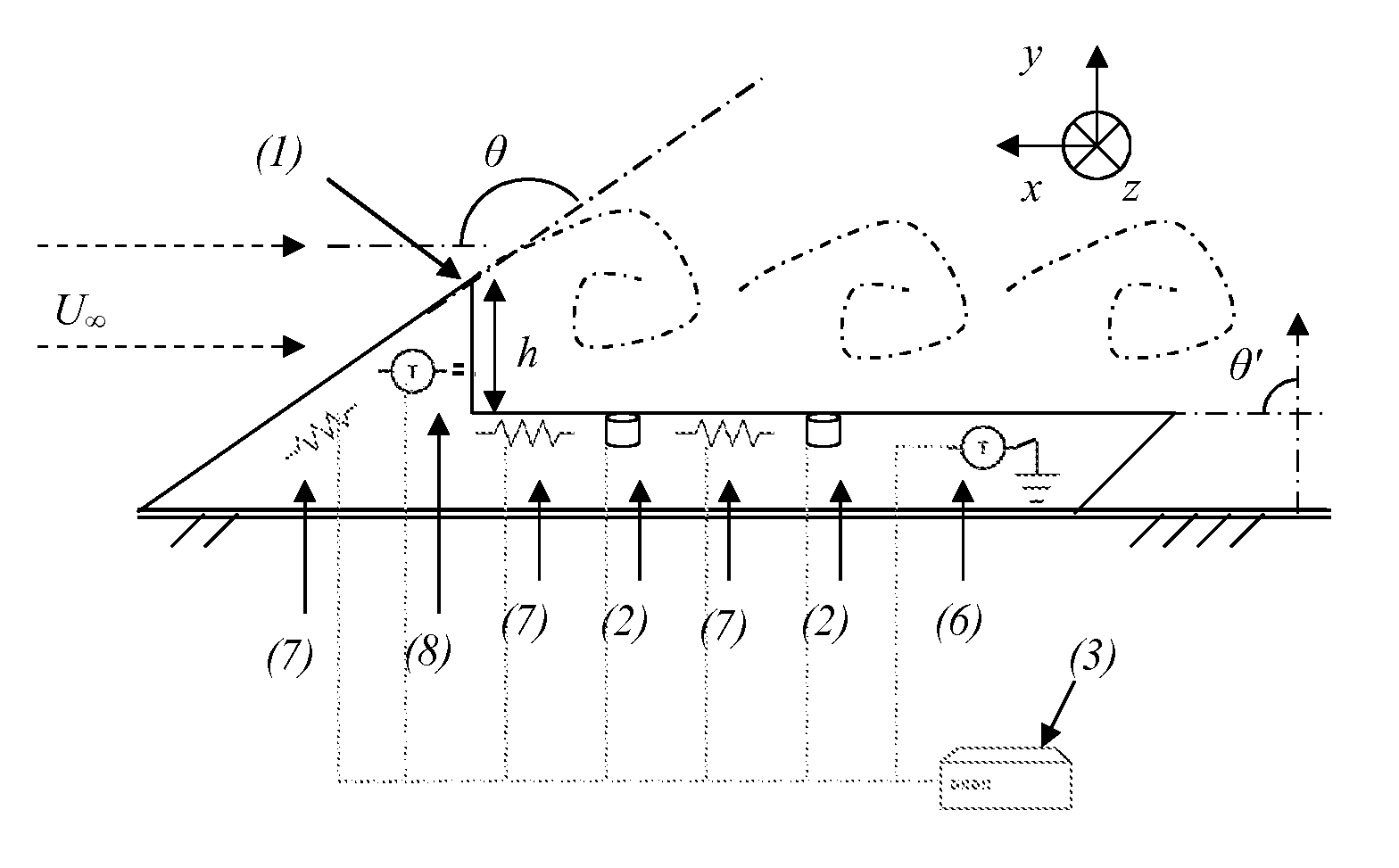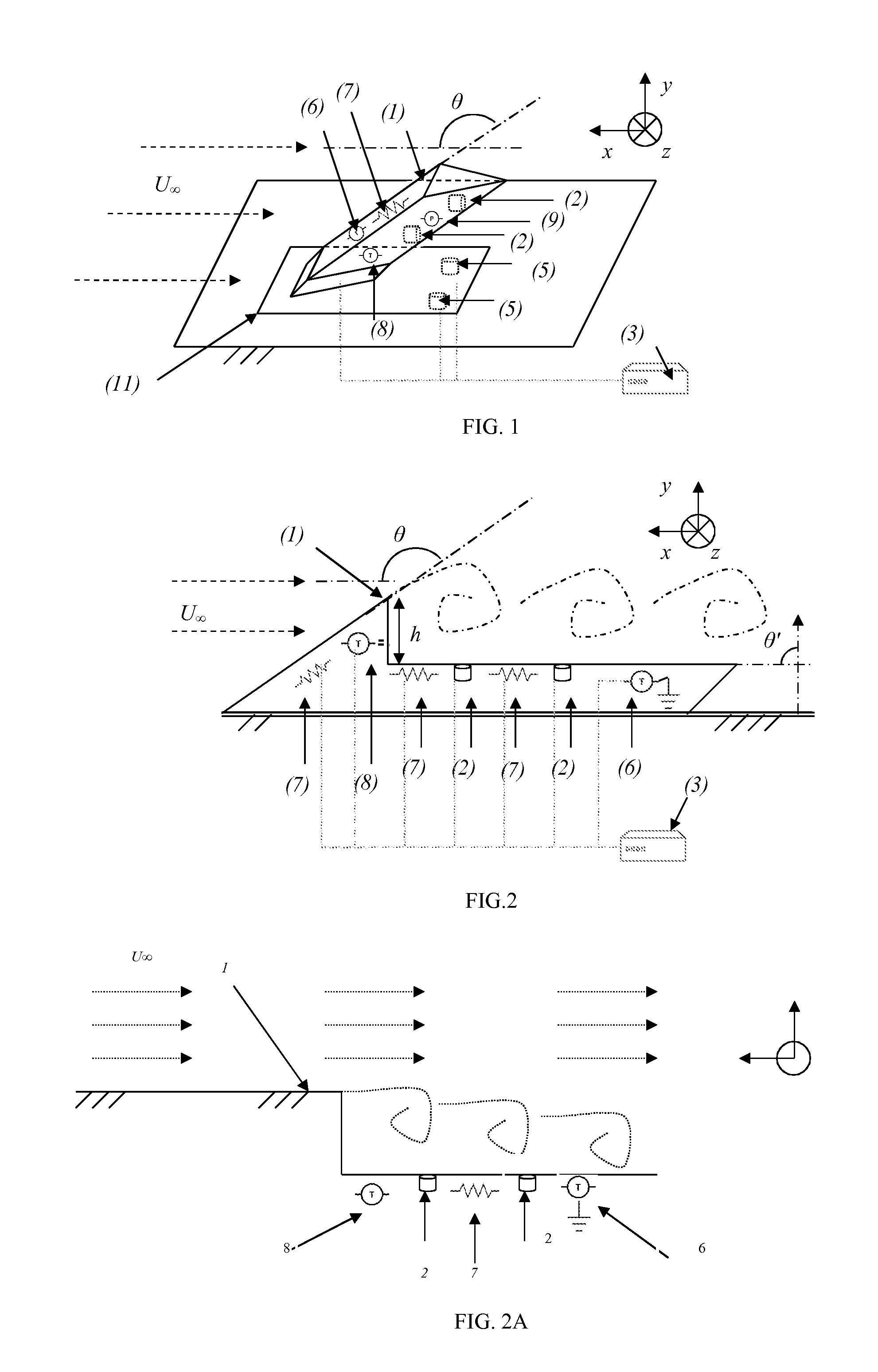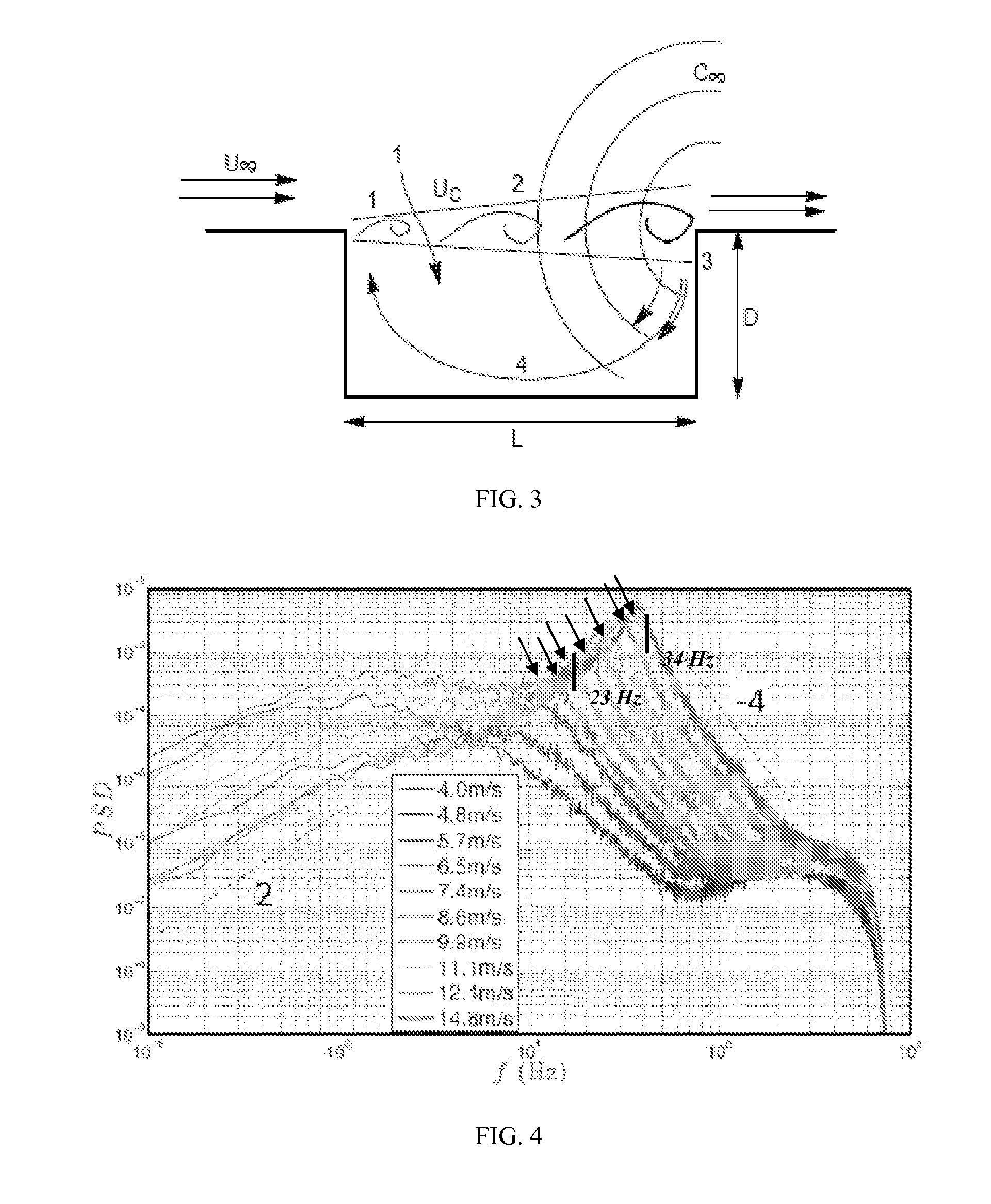Device for measuring the travelling speed of a fluid in relation to an object
a technology of fluid travelling speed and measuring device, which is applied in the direction of measuring device, volume/mass flow measurement, instruments, etc., can solve the problems of affecting the local aerodynamic or hydrodynamic instability of elements
- Summary
- Abstract
- Description
- Claims
- Application Information
AI Technical Summary
Benefits of technology
Problems solved by technology
Method used
Image
Examples
first embodiment
[0048]According to the invention, the local aerodynamic or hydrodynamic instability may be induced naturally by an element 1, native or intrinsic to the object. For instance, a fuselage, airfoil, tailplane or fin element, etc. in the case of an aerial mobile. When the object is a land vehicle, a bodywork element may act as a generator of the local aerodynamic or hydrodynamic instability. Hence, a hull element, in the case of a marine / river vehicle; an elbow, bend element, etc., for a duct; a pole element for a weather station, may generate local aerodynamic or hydrodynamic instability.
[0049]Furthermore, the element 1, generating local aerodynamic or hydrodynamic instability, may be an obstacle or a cavity already present on the object where it performs a specific function; for example, a Pitot tube, and alpha / beta probe, an antenna in the case of an aerial mobile; a rear view mirror, an antenna, . . . for a land vehicle.
[0050]The element 1, generating local aerodynamic or hydrodynam...
third embodiment
[0099]With reference to FIGS. 6A and 6B, the invention involves a body 40 specifically developed to be situated in the fluid flow and generate instabilities by means of a cavity 1. The instabilities are measured by instability sensors 2 placed inside said cavity 1. The body 40 is positioned in the relative flow of the fluid. Said body 40 is metallic and hollow in order to contain elements specific to the invention. The cavity 1 is open towards the outside (one single opening) of the body 40 and is arranged such that the fluid can enter its inside. The body 40, in addition to the cavity 1, may be executed as a machined block or in several parts. The body 40 adopts a pseudo-triangular shape in the XY plane (“ramp” type), so as not to have any stagnation point, in order not to retain ice. The downstream wall of the cavity 1 has a dimension along the Y axis greater than that of its upstream wall. The downstream wall slopes in relation to the YZ plane in order to allow any crystals conta...
PUM
 Login to View More
Login to View More Abstract
Description
Claims
Application Information
 Login to View More
Login to View More - R&D
- Intellectual Property
- Life Sciences
- Materials
- Tech Scout
- Unparalleled Data Quality
- Higher Quality Content
- 60% Fewer Hallucinations
Browse by: Latest US Patents, China's latest patents, Technical Efficacy Thesaurus, Application Domain, Technology Topic, Popular Technical Reports.
© 2025 PatSnap. All rights reserved.Legal|Privacy policy|Modern Slavery Act Transparency Statement|Sitemap|About US| Contact US: help@patsnap.com



